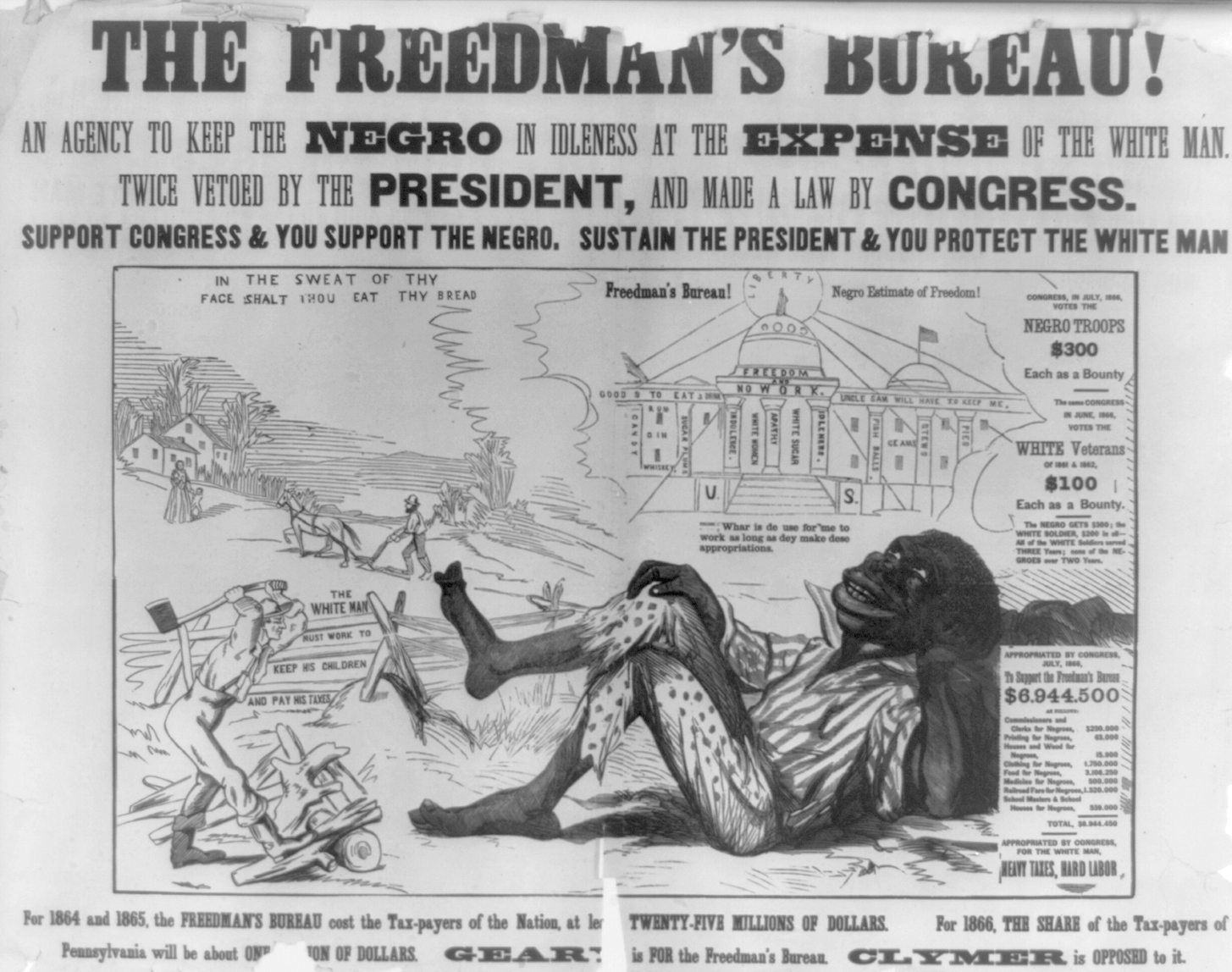The Reconstruction was the period after the Civil War when the US was trying to rebuild the South, who lost the war. The term refers to the policies implemented between 1865 and 1877 when the nation was focused on winning the war, abolishing slavery, defeating the Confederacy (south), and reconstructing the nation and amending the US constitution (one part of the amendments, the Bill of Rights, states, "No State shall make or enforce any law which shall abridge the privileges or immunities of citizens of the United States; nor shall any State deprive any person of life, liberty, or property, without due process of law; nor deny to any person within its jurisdiction the equal protection of the laws." This applies to colored people as well.).
Though it worked--for integrated schools were made, previous statuses as slaves or color or race weren't used as qualifications for voting, and the amendments to abolish slavery were established--there were still some problems. Schools got around the amendments by making segregation rules, and jobs wouldn't hire colored people, and the black codes were passed. The two presidents who succeeded Abraham Lincoln didn't do a very good job keeping the Reconstruction going. There was also the KKK (Ku Klux Klan) that tried to protect the rights of and further the interests of white Americans through intimidation of minorities like blacks and Jews and such, along with other hate groups. These things sparked the Civil Rights Movement, and soon after, a Second Reconstruction.
There was one significant part of the Reconstruction that happened after Abraham Lincoln was assassinated and Andrew Johnson took over--Congress established the Freedman's Bureau, which gave former slaves the food, clothing, and fuel they needed to live and advice on negotiating labor contracts. Johnson vetoed (forbade) this twice. Many former Confederates were not willing to accept the social changes or political domination of former slaves--they were unwilling to acknowledge that their society was different. Benjamin F. Perry, the provisional governor of South Carolina appointed by Johnson, said, "First, the Negro is to be invested with all political power, and then the antagonism of interest between capital and labor is to work out the result." There was also a political cartoon that alleged that the Freedman's Bureau money was being lavished on lazy freedmen at the expense of white workers.
This very closely relates to what Frances Chapman said in "Dying for Dixie" in the "Confederates in the Attic" book by Tony Horwitz, "Blacks don't really have anything against the flag. They just don't want us to have it. They want the best jobs, the biggest money. Now they want this. If we lose the mascot, it'll just be a matter of time before we lose everything." Like the poster, it implies that some people think that the slave masters and "former slaves" would switch places, where the whites are the ones working hard while the blacks do nothing.
Sources: http://en.wikipedia.org/wiki/Reconstruction_era_of_the_United_States, "Confederates in the Attic" by Tony Horwitz, http://www.digitalhistory.uh.edu/reconstruction/section4/section4_11.html, http://www.digitalhistory.uh.edu/reconstruction/credits.html
Tuesday, September 29, 2009
Subscribe to:
Post Comments (Atom)

No comments:
Post a Comment